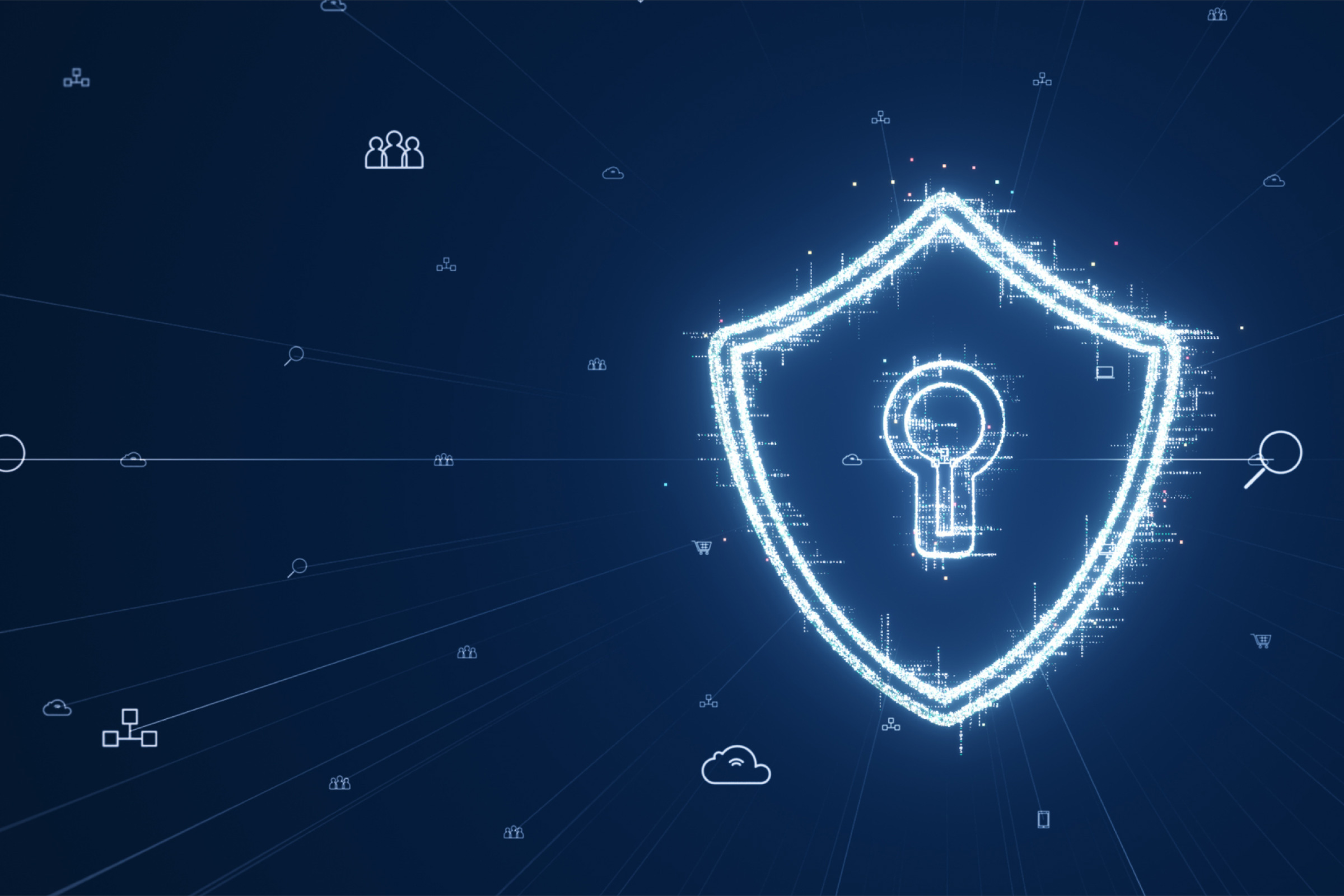What Is Threat Hunting?
Threat hunting is a proactive cybersecurity practice where security teams search for and isolate advanced cyber threats that have bypassed traditional security measures. It involves actively searching for malicious activity within a network, rather than just responding to alerts from security systems. This approach aims to reduce the “dwell time”—the time a threat remains undetected—and improve overall security posture.
Key aspects of threat hunting include:
- Proactive and iterative: Threat hunting isn’t just about reacting to incidents. It’s a continuous process of searching for threats that might be hiding in the network.
- Focus on unknown threats: Threat hunters look for anomalies, suspicious patterns, and indicators of compromise (IOCs) that might indicate a hidden attack.
- Human-led analysis: While threat hunting utilizes tools and technologies, it also relies heavily on the skills and experience of human security analysts to analyze data and identify potential threats.
- Data-driven approach: Threat hunters use a variety of data sources, including logs, network traffic, and endpoint data, to build a comprehensive picture of the network and identify potential threats.
Types of threat hunting include:
- Structured hunting: Follows a formal methodology based on known threats and hypotheses, often mapped to frameworks like Mitre ATT&CK.
- Unstructured hunting: Relies on analyst intuition and exploration to identify anomalies and suspicious behavior without a predefined hypothesis.
- Situational or entity-driven hunting: Focuses on specific high-risk entities or recent events, such as a new vulnerability or insider threat, to guide investigation priorities.
Tools and technologies used for threat hunting include:
- External Attack Surface Management (EASM): Scans for exposed internet-facing assets and vulnerabilities attackers could exploit.
- Security Information and Event Management (SIEM): Centralizes log data and enables querying and correlation to detect anomalies.
- Endpoint Detection and Response (EDR): Provides detailed endpoint telemetry and supports real-time threat investigation and response.
- Managed Detection and Response (MDR): Offers outsourced expert-led threat hunting and response services for organizations with limited in-house capabilities.
- Security analytics: Uses machine learning and behavioral analysis to surface hidden threats by identifying deviations from baseline behavior.
Why Is Threat Hunting Important in the Current Threat Environment?
Threat hunting addresses a critical gap in conventional security operations. Most security tools—such as intrusion detection systems (IDS), antivirus, and SIEM platforms—are reactive, relying on known indicators of compromise (IOCs) or predefined rules to trigger alerts. Threat actors who use custom malware, stolen credentials, or “living off the land” techniques can often bypass these tools undetected.
Proactive threat hunting adds a layer of proactive defense by enabling detection of:
- Unknown threats: Techniques that haven’t been cataloged in threat intelligence databases or antivirus signatures.
- Lateral movement: Activity where attackers navigate internally across a network after initial access.
- Insider threats: Malicious or negligent insiders whose activity may not match known external threat patterns.
- Dwell time reduction: Threat hunters help reduce the time attackers remain in the system undetected, which according to industry reports can span weeks or months.
Threat hunting improves incident detection rates, accelerates response times, and strengthens an organization’s overall organization’s cybersecurity posture by identifying and eliminating hidden cyber threats before they cause damage. It also helps refine and validate existing detection rules, improving future automated defenses.
Threat Hunting vs. Threat Intelligence
Threat intelligence involves the collection and analysis of information about known and emerging cyber threats. It provides context, such as attacker tactics, indicators of compromise, and recent exploits, which organizations use to inform their defenses and threat hunts.
Threat hunting is the hands-on process of searching within an organization’s own environment for evidence of threats, often leveraging threat intelligence as a guide. Threat intelligence supplies the data—such as suspicious IP addresses or behaviors—while hunting puts that intelligence into action, using it to generate hypotheses and drive investigations.
When integrated effectively, threat hunting and threat intelligence together create a proactive defense mechanism that stays ahead of evolving threats.
Types of Threat Hunting
There are three primary approaches to threat hunting: structured, unstructured, and event-driven.
1. Structured Hunting
Structured threat hunting is a methodical approach that relies on predefined hypotheses or frameworks, often based on threat intelligence, known attack patterns, or models such as the miter ATT&CK framework. Analysts follow a systematic process to test these hypotheses, focusing on specific tactics, techniques, and procedures that adversaries are known to use. This structure enables repeatability, making results easier to track, refine, and communicate across security teams.
By leveraging structure, organizations can standardize their hunting efforts and ensure they methodically cover known areas of risk. Structured hunting is particularly effective for detecting persistent cyber threats and vulnerabilities tied directly to documented adversary behaviors. It enables security teams to collect actionable data, identify trends, and continuously improve their detection capabilities by learning from each hunting iteration.
2. Unstructured Hunting
Unstructured threat hunting is a more exploratory process, often driven by an analyst’s intuition, experience, or observations of unusual activity. Rather than starting with a specific hypothesis, hunters analyze data to identify anomalies or behaviors that warrant further investigation. This method is highly flexible, allowing analysts to pursue leads as they occur and adapt their focus based on real-time findings.
Although unstructured hunting is less repeatable, it is valuable for uncovering novel threats or tactics that may not yet be documented in existing frameworks. Analysts might notice unusual login patterns, abnormal data flows, or subtle changes in system performance. By following these hunches and investigating outliers, security teams can identify early-stage attacks or behaviors that traditional defenses and structured hunts might overlook.
3. Situational or Entity-Driven Hunting
Situational or entity-driven hunting focuses on specific events, users, devices, or systems that represent increased risk due to recent changes or context. For example, after a critical vulnerability is announced, threat hunters may zero in on assets exposed to exploitation. Similarly, monitoring high-risk users, such as administrators or third-party vendors, can reveal targeted attack attempts or indicators of insider threats.
This approach adapts hunting priorities in response to evolving risks in the environment. Entity-driven hunting enables rapid containment and investigation when new threats emerge, ensuring that attention is directed where it is most needed at any given time. By staying attuned to situational changes and entity behaviors, organizations can quickly address targeted attacks and reduce the likelihood of successful breaches.
Tips from the Expert

Rob Gurzeev, CEO and Co-Founder of CyCognito, has led the development of offensive security solutions for both the private sector and intelligence agencies.
In my experience, here are tips that can help you better excel at threat hunting in 2025:
- Incorporate attack path mapping with threat hunt findings: Go beyond IOC or TTP hunting by mapping full adversary attack paths in the environment post-hunt. This helps visualize how attackers could pivot from initial access points to high-value assets. Use attack path management tools (e.g., BloodHound, Attack Flow) to overlay findings for proactive hardening.
- Integrate deception technologies to feed hunting hypotheses: Deploy deception elements like honeypots, decoy credentials, or fake data shares inside the network. Analyze any engagement with these for hunting triggers. This allows teams to detect early-stage reconnaissance and lateral movement that may not generate alerts in traditional systems.
- Hunt for silent misconfigurations as latent breach enablers: Many hunts focus only on active threats. Expand the scope to include dangerous misconfigurations (e.g., open S3 buckets, overly permissive IAM roles, or disabled logging settings) that adversaries could abuse later.
- Apply temporal anomaly baselining across different threat hunting windows: Instead of just looking for static anomalies, compare behavioral baselines across time slices (e.g., month-to-month, post-patch vs. pre-patch periods). This helps surface slow-and-low attacker behaviors that evolve gradually and would otherwise blend in.
- Correlate external threat actor infrastructure with internal telemetry: Pivot off emerging threat actor infrastructure (C2 servers, phishing domains) scraped from public intel feeds or passive DNS datasets and look for any internal telemetry evidence of historical or current communication attempts.
The Threat Hunting Lifecycle
Threat hunting typically follows a structured process, which includes:
1. Planning and Preparation
The planning phase sets the foundation for a successful threat hunt. It begins with defining clear objectives—such as the type of cyber threats to look for or systems to prioritize—and establishing the scope and desired outcomes.
Triggers for a hunt may include incidents, new intelligence reports, alerts from defense tools, or identified vulnerabilities. By setting sharp goals and triggers, organizations ensure their hunts are focused, resource-efficient, and aligned with broader security objectives.
Effective planning also includes gathering necessary resources, assembling skilled teams, and determining timelines. It is critical to select the right frameworks, hypotheses, and data sources for the hunt. A well-defined plan allows for faster execution, clear communication of progress to stakeholders, and better measurement of results after the hunt concludes.
2. Data Preparation
Data preparation involves collecting, aggregating, and normalizing the diverse sets of security data required for threat hunting—such as logs, network traffic, endpoint telemetry, and threat intelligence feeds. The quality and accessibility of this data directly impact the success of a hunt. Analysts spend significant time ensuring that relevant datasets are complete, current, and structured for efficient querying and correlation.
Cleaning and enriching data helps minimize noise, reduce false positives, and improve the reliability of findings. Data normalization, timestamp alignment, and context enrichment with threat indicators or asset inventories allow hunters to quickly zero in on suspicious patterns or anomalies. Having well-prepared data accelerates investigations and supports repeatable, scalable hunting activities.
3. Execution and Investigation
During the investigation phase, analysts begin actively searching through the prepared data to test hypotheses or probe for anomalies. They employ various tools and techniques—such as querying SIEM systems, linking network flows, or mapping activities to attack frameworks—to identify indicators of compromise or suspicious patterns. This phase is characterized by iterative deep-dives, pattern recognition, and root-cause analysis.
Collaboration and communication are essential in this phase, as findings may require input from multiple stakeholders or subject matter experts. As new evidence emerges, hunters may pivot or expand their inquiries, continually refining the scope of investigation. The primary objective during execution is to validate or disprove hypotheses, discover hidden threats, and collect actionable evidence for response teams.
4. Response
Once a threat is identified, the response phase focuses on containment, eradication, and mitigation. Security teams collaborate to isolate affected systems, block malicious activity, and prevent lateral movement within the environment. Detailed response plans are executed to address the immediate threat while minimizing operational disruption.
Lessons learned during the response feed directly into improving security controls and future hunt strategies. Effective response also includes communicating findings to relevant stakeholders, reporting to management, and, if necessary, coordinating with external entities such as law enforcement or third-party vendors. Well-orchestrated response actions limit attacker dwell time and reduce potential damage to the organization.
5. Reporting and Feedback
Reporting and feedback are crucial for capturing knowledge and continuous improvement. Thorough documentation of each hunt’s findings, methods, and outcomes builds institutional knowledge that benefits future investigations. Reports should include details on indicators discovered, attack techniques observed, remediation actions taken, and recommendations for improving defenses.
Feedback loops enable organizations to refine their threat hunting work and adapt to evolving adversary techniques. By reviewing what worked well and what could be improved, security teams iterate on their methods, update playbooks, and inform risk assessments. Effective reporting and feedback ensures that threat hunting remains a valuable, improving practice within the cybersecurity program.
What Triggers a Threat Hunting Exercise?
There are two common triggers organizations use to activate a threat hunting exercise: threat intelligence and security hypotheses.
Intel-Based Hunts
Intel-based hunts are founded on current threat intelligence, such as recently discovered indicators of compromise (IOCs), public threat reports, or information about threat actor groups. Analysts use this intelligence to build focused searches for matching events within organizational data, such as searching for malicious hashes, domains, or behaviors associated with specific actors. This method is particularly effective against known threats and ongoing campaigns relevant to the organization’s sector or geography.
The chief advantage of intel-driven hunting is its specificity and ability to rapidly surface direct evidence of compromise. However, it depends on the quality and relevance of the intelligence, and may miss novel or targeted cyber threats not yet reported. Regular updates and validation of threat feeds are essential to keep hunts relevant and actionable in today’s fast-evolving threat landscape.
Hypothesis-Based Hunts
Hypothesis-based hunting revolves around the formation of behavioral hypotheses based on experience, knowledge of attacker tactics, or observed anomalies. Analysts propose theories such as “an adversary might use remote desktop protocol to move laterally” or “an insider could exfiltrate data using cloud storage.” They then design searches and analyses to prove or disprove these scenarios, independent of pre-existing threat intelligence.
This approach is valuable for uncovering previously unknown threats, as it relies on understanding attacker motivations and techniques rather than specific indicators. Hypothesis-based hunts encourage creative thinking and adaptability, allowing organizations to anticipate unique attack paths and detect sophisticated adversaries who avoid public intel feeds.
Hybrid Approaches
Hybrid approaches combine elements from multiple hunting methodologies to maximize coverage and adapt to complex environments. Analysts may start with threat intelligence to guide initial searches, then pivot to hypothesis-driven investigations as evidence emerges, or conduct exploratory scans to benchmark baseline behaviors before drilling down with structured hunts. This flexibility enables organizations to respond dynamically to evolving cyber threats and shifting priorities.
Successful hybrid hunting relies on interdisciplinary skills, the integration of varied data sources, and strong collaboration among team members. By blending methodologies, security teams can strengthen detection effectiveness, minimize blind spots, and ensure that hunting efforts keep pace with changing attacker tactics and organizational risk profiles.
Common Threat Hunting Frameworks
Threat hunting frameworks provide structured methodologies and reference models that guide analysts through the hunting process. Examples of popular frameworks include:
1. Prepare, Execute, and Act with Knowledge (PEAK)
The PEAK (Prepare, Execute, and Act with Knowledge) threat hunting framework was developed by Splunk to help organizations formalize and mature their hunting programs. It focuses on three main phases:
- Prepare: This phase emphasizes defining hunt objectives, identifying relevant data sources, and selecting tools. Analysts document their hypotheses, establish success criteria, and prepare the environment for investigation.
- Execute: Analysts conduct the hunt by analyzing security data, testing hypotheses, and looking for indicators of compromise. The framework encourages iterative analysis, where findings drive new lines of inquiry.
- Act with Knowledge: Once the hunt concludes, teams focus on documenting findings, communicating results, and updating detection mechanisms. This phase helps organizations convert insights from hunts into lasting improvements in their security posture.
PEAK is designed to improve repeatability, transparency, and alignment between hunting teams and broader security operations.
2. Open Threat Hunting Framework (OTHF)
The Open Threat Hunting Framework (OTHF) is a community-driven project that provides a standardized approach to organizing threat hunting activities. Its goal is to help hunters classify, share, and track hunting procedures in a consistent way.
OTHF offers a schema for documenting hunts, including fields such as:
- Hunt name and description
- Threat behavior or hypothesis being investigated
- Required data sources
- Detection logic and analytic techniques
- Response and mitigation steps
By using OTHF, teams can build a shared library of hunts, making it easier to collaborate and repeat effective hunting strategies across different environments.
3. Mitre ATT&CK
The Mitre ATT&CK framework is a widely used knowledge base that catalogs adversary tactics, techniques, and procedures (TTPs) observed in real-world cyberattacks. It helps threat hunters map observed behaviors to known attack patterns, making investigations more targeted and effective.
ATT&CK organizes adversary actions into tactical objectives (like privilege escalation or lateral movement) and detailed techniques for achieving those goals. Threat hunters use this model to:
- Develop hypotheses
- Guide analytic queries
- Correlate findings with known adversary behavior
- Prioritize detection engineering efforts
By leveraging ATT&CK, organizations can align their hunts with documented threat behaviors and improve detection coverage across the attack lifecycle.
4. Cyber Kill Chain
The Cyber Kill Chain, developed by Lockheed Martin, outlines the typical stages of a cyberattack, from initial reconnaissance to final objectives like sensitive data exfiltration. It breaks attacks into seven sequential phases:
- Reconnaissance
- Weaponization
- Delivery
- Exploitation
- Installation
- Command and Control (C2)
- Actions on Objectives
Threat hunters use the Cyber Kill Chain to structure their investigations around these stages, helping identify where attackers might be operating within the environment. By analyzing activity at each step, hunters can detect andneutralize threats earlier and disrupt attacks before they reach their final objectives.
Threat Hunting Tools and Technologies
Threat hunters use several elements of the cybersecurity tool stack to guide and execute their operations.
External Attack Surface Management (EASM)
External attack surface management focuses on identifying and monitoring all internet-facing assets that could expose an organization to external threats. This includes domains, IP addresses, web applications, and cloud resources that may be unintentionally exposed or poorly secured. EASM tools continuously scan for vulnerabilities, misconfigurations, and shadow IT, giving threat hunters visibility into assets that attackers might target.
By integrating EASM findings into the threat hunting process, analysts can prioritize investigations based on newly discovered external risks. For example, if EASM tools detect a misconfigured server or an exposed development environment, hunters can proactively check for signs of compromise linked to that asset.
Security Information and Event Management (SIEM)
SIEM platforms aggregate and analyze security event data from across the enterprise, providing centralized visibility and detection capabilities vital for threat hunting. They collect logs from firewalls, servers, endpoints, and applications, correlating events in real time or retrospectively to surface anomalies and indicators of compromise. Analysts rely on SIEMs to query event data, build custom searches, and trigger alerts for suspicious activity.
Advanced SIEMs offer automated data analytics, machine learning, and contextual enrichment, making it easier for hunters to identify patterns consistent with adversary tactics. SIEMs also simplify compliance reporting and incident documentation, serving as both the backbone of detection strategies and the initial point of investigation during most threat hunts. Their effectiveness hinges on configuration, data quality, and ongoing tuning.
Endpoint Detection and Response (EDR)
EDR solutions monitor endpoint devices for malicious activity, capturing detailed telemetry on processes, file changes, user actions, and network connections. These tools enable rapid detection and investigation of cyber threats that target user workstations or servers, allowing analysts to trace adversary movements, validate hypotheses, and respond swiftly to incidents. EDR’s forensic capabilities make it indispensable for understanding attack chains and containing lateral movement.
Modern EDR platforms often include automated threat detection, guided investigations, and remote response functions, helping hunters to isolate compromised devices and remediate threats in real time. EDR data is critical for in-depth hunting scenarios where endpoint visibility unlocks evidence that may not appear in network or log data alone. Integration with SIEM and threat intelligence further amplifies EDR’s effectiveness.
Managed Detection and Response (MDR)
MDR services provide organizations with outsourced threat hunting, detection, and response capabilities managed by external experts. These providers combine advanced security tools, human expertise, and 24/7 operations centers to hunt for cyber threats at scale and across diverse environments. MDR supports organizations that lack internal resources or specialized talent but require robust detection and incident response.
Through regular threat hunts, rapid investigation of alerts, and coordinated response actions, MDR strengthens security outcomes and reduces adversary dwell times. Providers continuously adapt techniques based on new intelligence and client-specific risks, often offering detailed reporting and recommendations to improve security posture. MDR solutions ensure broader coverage, faster remediation, and a higher level of security maturity for many organizations.
Security Analytics
Security analytics platforms leverage big data and advanced analytics—including machine learning and behavioral analysis—to identify threats that evade signature-based tools. These solutions ingest data from across the IT environment, establish baselines for normal behaviors, and automatically surface deviations indicative of compromise. Analysts can use analytics tools to perform deep investigations, correlate disparate data points, and proactively hunt for unknown threats.
By enabling visualization, trend analysis, and anomaly detection at massive scale, security analytics expand the reach and effectiveness of threat hunting teams. They reduce manual effort needed to sift through large datasets and improve the accuracy of threat detection through contextual enrichment. Advanced analytics are essential for keeping pace with the complexity and volume of modern cybersecurity data.
Learn more in our detailed guide to cyber threat hunting tools.
4 Best Practices for Effective Threat Hunting
1. Establish a Repeatable Process
Building a repeatable process ensures consistent quality and efficiency in threat hunting activities. Documented playbooks, workflows, and step-by-step guides help standardize investigations, allowing hunts to scale across different teams and environments. Repeatability also aids onboarding of new hunters and reduces the risk of critical steps being missed during urgent hunts.
Organizations should regularly review and refine these processes to incorporate new intelligence, attacker trends, and lessons learned from previous hunts. Automation where feasible can streamline tasks and free analysts to focus on higher-value investigative work. A disciplined, structured approach is essential for maintaining effective and sustainable threat hunting programs.
2. Document Findings and Refine Techniques
Thorough documentation of hunt objectives, methodologies, findings, and outcomes serves as an organizational knowledge reservoir. Well-kept records aid in post-mortem analysis, facilitate knowledge transfer, and foster continuous process improvement across teams. Each documented hunt becomes both a reference for future cases and a guide for refining detection strategies.
By tracking which techniques successfully identified cyber threats and where false positives occurred, teams can optimize tool configurations, adjust hypotheses, and improve detection coverage. Feedback from documentation also drives updates to playbooks, response procedures, and broader security policy, ensuring that threat hunting remains adaptable and lessons are institutionalized.
3. Continuously Train and Upskill Hunters
Threat hunting demands a high level of technical expertise, curiosity, and knowledge of both attack and defense techniques. Ongoing threat hunting training—via certifications, hands-on labs, red team-blue team exercises, or threat intelligence briefings—keeps hunters aligned with the latest threats and tools. Encouraging skill development increases analyst retention and operational effectiveness.
Organizations should foster a culture of knowledge sharing, mentorship, and cross-functional collaboration among hunt teams and other IT or security disciplines. Participation in community threat-sharing groups, attending conferences, and contributing to research can deepen analytical skills and bring fresh perspectives to hunting methods. Continuous learning is crucial in keeping pace with adversaries’ rapid innovation.
4. Regularly Measure and Optimize Performance
To maximize the value of threat hunting, organizations must establish metrics that track success, efficiency, and areas for growth. Key performance indicators may include dwell time reduction, number of hunts conducted, cyber threats uncovered, or improvements in response time. Such measurements help justify investments and inform resource allocation.
Regular assessment surfaces process bottlenecks and identifies tooling or skills gaps, guiding future investments. Reviews of performance data can lead to process automation, the adoption of new analytical techniques, or deeper integration of tools and intelligence. Ongoing optimization ensures that threat hunting delivers meaningful results and adapts as threats and environments evolve.
Supporting Threat Hunting with CyCognito
Effective threat hunting begins with visibility—and CyCognito provides exactly that, from the outside in. By continuously discovering, mapping and evaluating internet-exposed assets across subsidiaries, cloud environments, and unmanaged infrastructure, CyCognito gives threat hunters a high-fidelity external view of where adversaries are most likely to strike.
This outside-in intelligence helps hunters formulate hypotheses grounded in real exposure, correlate internal telemetry with external attacker infrastructure, and prioritize investigations based on exploitability and business impact—not just noise.
What sets CyCognito apart is its ability to surface threats even before they generate alerts, thanks to its automated reconnaissance, attack path mapping, and risk-based prioritization. Threat hunters can use these insights to enrich structured and unstructured hunts alike, uncover silent misconfigurations, and trace lateral movement from initial compromise to critical assets.
Whether you’re chasing adversary infrastructure or validating post-breach hypotheses, CyCognito ensures you’re not hunting blind—you’re hunting smart, with attacker-contextualized intelligence and real business relevance.












